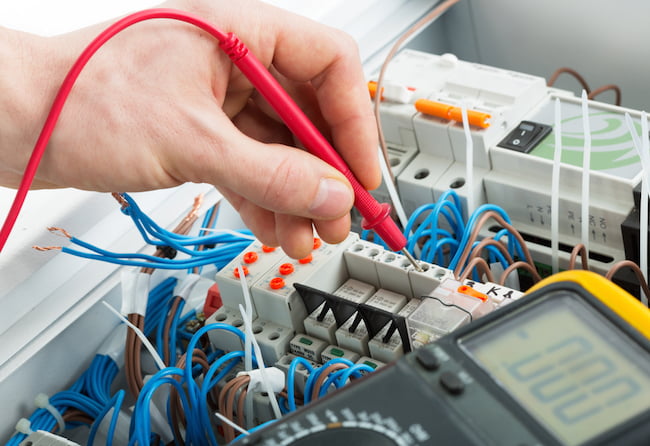Why Planning Enclosure Thermal Management before Prototype Phase Is Critical

The ideal time to factor in thermal management of the enclosure is during the initial design stage before equipment is purchased. Here are some considerations to take before the prototype phase.
Identify Environmental Parameters
The first step the designer should take is to identify environmental conditions at the site where the panel will be installed. Important issues that impact thermal management include:
- What is the ambient temperature range?
- What are the levels of humidity?
- Is the area well ventilated?
- Is the panel exposed to solar radiation?
- Will the panel be exposed to rain and wind?
- Is there dirt or dust present?
- Are any corrosive chemicals present?
- Is there a need to hose down the panel?
The answers to these questions will indicate if the panel can be naturally ventilated, ventilated by fans, or needs to be sealed and fitted with a closed loop cooling system. They also determine the materials of construction, finish, and the required enclosure NEMA rating.
Equipment Selection
Having assessed the environment where the enclosure will be installed, the next step is to consider the equipment to be installed inside the panel. It’s useful to compare the heat dissipation ratings of equipment from different suppliers as well as their recommended operating temperature ranges and use this information to establish the maximum and minimum operating temperatures of the enclosure. It’s also the time to assess any issues regarding humidity and the possibility of condensation during cool periods, which may indicate the need for a panel heater.
Equipment Layout and Panel Size
When laying out the enclosure, it’s important to spread the heat load. Avoid stacking heat producing drives one above the other and allow an unrestricted flow of air behind each drive. Position drives and similar equipment as high as possible in the cabinet.
Once the equipment layout is complete, the panel size can be selected. If possible, choose a slightly larger enclosure that allows for expansion and runs slightly cooler. Avoid shallow enclosures because these may restrict fitting options. Although the final decision regarding the cooling method may not have been made, allow for this while laying out equipment and provide for an unrestricted flow of cool air inside the enclosure.
Selection of a Cooling System
Calculate the total heat load of the enclosure and the required cooling capacity for the cooling system, not forgetting to allow for external influences. Based on this, choose the cooling solution:
- Filtered fan: The cheapest solution is fan-assisted ventilation and is first choice if the environmental conditions allow. Fit the fan at the bottom of the enclosure with the exhaust vent at the top. Both the fan and exhaust should have filters. There must be no other openings in the panel
- Air-to-air heat exchanger: Provided the ambient temperature is lower than the desired panel enclosure temperature, this will work well. The enclosure needs to be sealed to maintain a closed loop. Confirm there’s adequate cooling capacity.
- Enclosure air conditioner: A closed loop enclosure air conditioner will maintain the enclosure temperature within close limits even in hot ambient temperatures. It also keeps the humidity under control.
Avoid the Expense of Retro Fitment
Planning ahead and considering enclosure cooling options during the design phase helps optimize your enclosure and cooling system solution and provides the most cost effective overall solution. Contact us at Thermal Edge and allow our team to help you design the best enclosure cooling solution.


